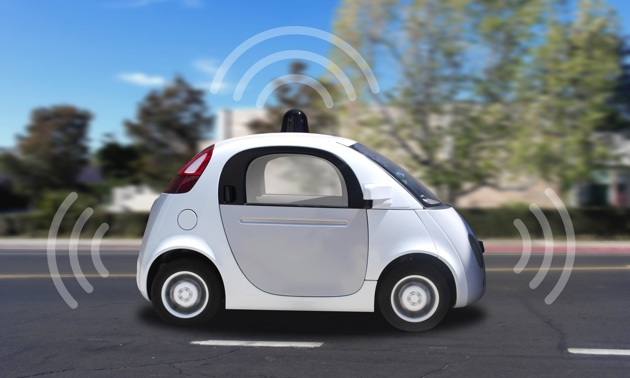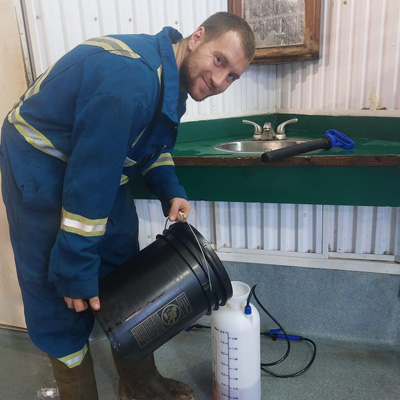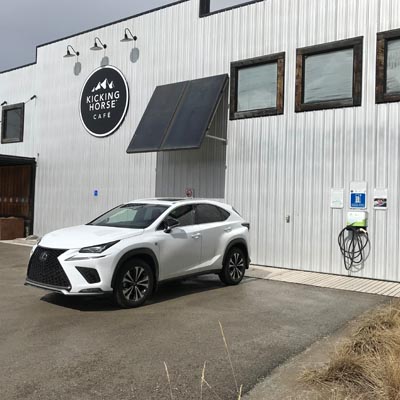The future of driving
Not long ago the idea of a self-driven car seemed like science fiction. Now it seems inevitable

How long before we see driverless cars on the road in the Kootenays? — MartialRed/istock/thinstock
Imagine this: you pick up your phone, touch the screen and politely tell it that you would like a ride to the grocery store. There’s a pause. “Your wait time will be 10 minutes,” it replies curtly.
Precisely 10 minutes later there is a notification on your phone, telling you your ride is here. You look outside and so it is. A car is parked in your driveway, patiently waiting with no driver. You walk outside, get in the passenger’s seat and relax. Then the car quietly pulls out.
While this may seem like a futuristic vision borrowed from Aldous Huxley’s Brave New World or an earthly excerpt from Star Trek, it’s one that is rapidly emerging as a realistic reality. According to Heather Fancy, a product consultant for Nelson Ford and an automotive blogger, it’s also an inevitable one.
“Do I see [autonomous] cars happening here? Absolutely," Fancy said. "How will it work and when will it work? That I can’t say.”
The idea and selling features of autonomous or self-driving cars are fairly simple: a car without a driver that communicates with the world around it—including other cars—can take up less room, provide safer transportation for people and goods, and take over a menial task that, until now, has always required a human touch.
The process of putting this idea into action is far more complicated and one that has all major automotive companies working feverishly to bring these technologies to consumers around the world. Ahead of this pack is Google, which has been testing autonomous cars for several years and has now been offered programming transparencies by companies like Ford in order to fast-track the process through collaboration.
Tesla is also bringing its knack for innovation to the game and has already released vehicles—its Model X and S cars—that can drive themselves out of a garage. Tesla owner Elon Musk recently told the BBC that people would eventually be able to summon their cars over thousands of kilometres through an app they are developing.
While Fancy said she is unsure as to what the cars will even look like or when they might become a reality in the Kootenays, she imagines they will most likely be introduced as transporters of goods for practical, risk-management reasons.
“Ford is deep in projects for self-driving cars but I imagine they will be used on products first,” she said. “You order a product, it arrives at your home, you have a code on your phone that opens the vehicle and you get your product.”
This is an idea that is also being tested with drones—most famously by Amazon through its future service Prime Air—but the regulatory nightmare and lack of testing have thus far kept it grounded. In the spring of 2015 news broke that the company was testing the drones in a secret location somewhere in rural British Columbia.
As new cars from Ford, Dodge, Audi, GM and Mercedes are regularly equipped with their own Wi-Fi hotspots, the connectivity between vehicles is increasing. This sharing of information will eventually allow for data exchanges like distance, road conditions, infrastructure and landmarks, effectively creating up-to-date maps of the world around our vehicles.
“The vehicles are going to lose their individuality,” said Fancy. “They’re all going to be connected and working together.”
Much like the problem of insufficient charging stations facing the electric vehicle industry, there is a certain element of a waiting game between consumers, manufacturers and infrastructure.
“It’s almost a chicken and an egg thing,” said Fancy. “We have vehicles that are self-driving. Universities, Google and others are actively testing it. We have blind-spot warnings in Ford vehicles. We’re on the cusp. How it will transform and what it will look like, who knows?”
Regardless of when or how, she is excited by the prospect.
“I can’t wait to get on my phone and say, ‘Siri, I need a ride to City Hall’ and have her say ‘Your wait time will be 15 minutes.' ”





Comments